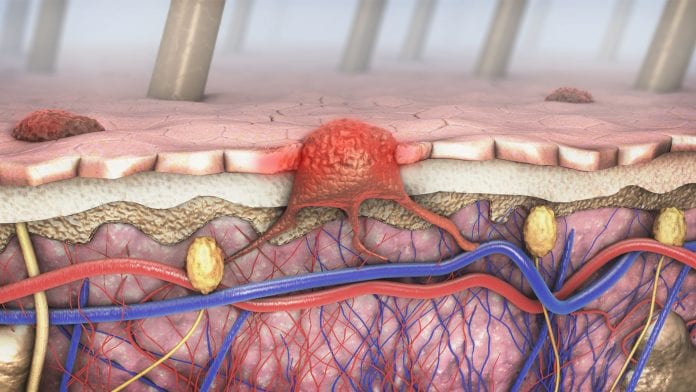
A new study from the University of Birmingham, reveals smartphone apps used to as ‘early warning systems’ for skin cancer are poorly regulated and frequently do not produce accurate results
Skin cancer detection apps are designed to ensure that the right people seek medical attention by providing a risk assessment of a new or changing mole. The apps work by using specialised algorithms to try to detect possible skin cancers.
Skin cancer has one of the highest global incidences of any cancer. Early detection and treatment, particularly of melanoma, can improve survival. According to this new analysis, however, apps may cause harm from failure to identify potentially fatal skin cancers, or from over-investigation of false positive results – for example removing a harmless mole unnecessarily.
The researchers based in the University of Birmingham’s Institute of Applied Health Research in collaboration with the Centre of Evidence-Based Dermatology at the University of Nottingham analysed a series of studies produced to evaluate the accuracy of six different apps. Their results, published in The BMJ, reveal a mixed picture, with only a small number of studies showing variable and unreliable test accuracy among the apps evaluated.
Not everyone is an expert
Dr Jac Dinnes, Lead researcher, the Institute of Applied Health Research at the University of Birmingham, said: “This is a fast-moving field and it’s really disappointing that there is not better quality evidence available to judge the efficacy of these apps. It is vital that healthcare professionals are aware of the current limitations both in the technologies and in their evaluations.”
The quality of the studies also concerned the research team, which evaluated apps using images taken by experts rather than by app users. In addition, many studies did not identify whether lesions identified as ‘low risk’ by the apps were in fact benign, further compromising the conclusions that can be drawn from the evaluations.
Can we trust the CE mark?
Co-author Jon Deeks, Professor of Biostatistics in the Institute of Applied Health Research, adds: “Regulators need to become alert to the potential harm that poorly performing algorithm-based diagnostic or risk monitoring apps create. We rely on the CE mark as a sign of quality, but the current CE mark assessment processes are not fit for protecting the public against the risks that these apps present.”
The authors also drew awareness to the regulations governing the evaluation of healthcare apps. Manufacturers can currently apply CE marks to smartphone apps without necessarily being subject to independent inspection by bodies such as the UK Medicines and Healthcare Products Regulatory Agency (MHRA).
Although this may change with new Medical Device Regulations coming into force in 2020, the researchers noted that stricter assessment processes in operation in the US has resulted in no skin cancer assessment apps receiving regulatory approval.
Dinnes added: “As technologies continue to develop, these types of apps are likely to attract increasing attention for skin cancer diagnosis, so it’s really important that they are properly evaluated and regulated. Of course, we also need to emphasise how important it is to go and see your GP if you have concerns – regardless of what an app might tell you.”
The team also has made a series of recommendations for future studies of smartphone apps:
- Studies must be based on a clinically relevant population of smartphone users who may have concerns about their risk of skin cancer
- All skin lesions identified by smartphone users must be included – not just those identified as potentially problematic
- Clinical follow-up of benign lesions must be included in the study to provide more reliable and generalizable results.
The research was supported by the NIHR Birmingham Biomedical Research Centre and is an update of one of a collection of reviews funded by the National Institute for Health Research through its Cochrane Systematic Review Programme Grant.







